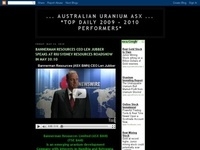Published on Tuesday May 08 2012 (AEST)

Japan shut down its last operating commercial reactor over the weekend. To put this event into context, before the Fukushima disaster Japan boasted 54 operating commercial reactors providing around one third of the country's electricity needs. The shut-down marks the first time Japan will be without any nuclear power since 1966.
The Tomari 3 plant has not been shut down for good, rather for regular maintenance as is required by the Japanese government every thirteen months. However, every reactor in Japan shut down for maintenance since Fukushima remains out of service for the time being as the government ponders public perception and remains unsure over the country's nuclear future. Some 17 reactors were directly damaged by the earthquake/tsunami.
Japan's nuclear blackout is not, nevertheless, considered permanent. Whether or not the government is allowing time to pass and wounds to heal post-tsunami before moving to restart reactors is not particularly clear, but many an analyst is of the belief the deflated Japanese economy simply cannot afford to replace its nuclear capacity with that of more expensive and dirtier fossil fuels. A swing towards more LNG imports is believed to be very likely, but no combination of LNG, oil and coal alone is considered commercially viable an alternative to at least some nuclear power generation.
Analysts are as yet unsure as to just when Tokyo will be forced to take the potentially unpopular step of restarting any undamaged reactors.
With Japan currently out of the equation, the world's largest uranium producer, Canada's Cameco, has suggested at its quarterly earnings result that the near-term uranium outlook remains subdued, although the company has been seeing an increase in interest from long-term customers looking for supply over five years.
Demand is spread evenly across the US and Europe, with China and India adding to the mix and even one Japanese utility sniffing around, thus adding weight to analyst expectations noted above.
Cameco's Cigar Lake project will ultimately be the biggest uranium project on the planet ahead of any significant expansion at BHP Billiton's Olympic Dam, and is currently 70% complete ahead of expected first production in 2013 and full capacity in 2017.
The start-up is timely given it roughly coincides with the expiry of the Highly Enriched Uranium agreement between Russia and US which sees nuclear warheads dismantled as a source of uranium for peaceful purposes. Cigar Lake would have been up and running a lot sooner were it not for a significant flooding event several years ago.
Which brings us to Energy Resources of Australia . Last week ERA began long awaited exploration drilling with the hope of proving up the Ranger Deeps underground resource base. A commercial decision on Ranger Deeps is a life or death call for ERA given last year's flooding of the open pit mine.
The growing demand for uranium on term contracts as noted by Cameco has been reported by industry consultant TradeTech for several weeks now. With uranium pricing remaining not much above Fukushima fallout levels, it is apparent utilities across the globe are now reemerging to secure supply contracts into the future. Such demand interest has begun to impact on spot pricing.
The spot uranium market remains thin, with TradeTech reporting 17 transactions totalling 3.2mlbs of U3O8 equivalent over the month of April, down from March's 22 transactions for 4.2mlbs. Interest in the term market has nevertheless encouraged spot sellers to back of their offer prices, such that TradeTech's indicative spot price for end-April was up US40c from end-March to US$51.50/lb.
Last week's activity resulted in four transactions totalling 475,000lbs of U3O8 equivalent, and while buyers are playing somewhat of a cat and mouse game with sellers, each transaction was settled at a successively higher price over the week. TradeTech has lifted its weekly spot price indicator by US50c to US$52.00/lb. The buyers mostly represented speculative interest.
With term market interest building but yet to provide a significant number of transactions TradeTech's term price indicators remain at US$54/lb (medium) and US$64.lb (long).
 Australian Uranium News - Research
Australian Uranium News - Research


No comments:
Post a Comment